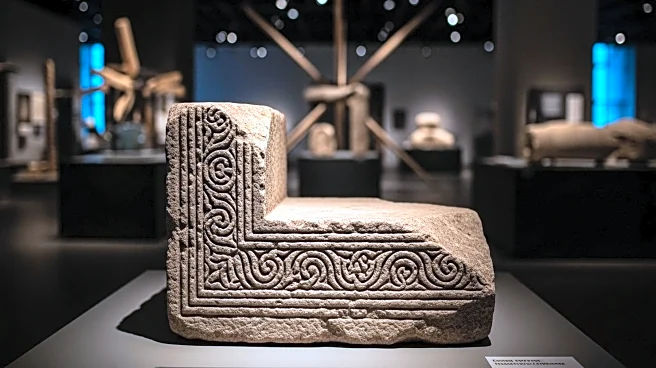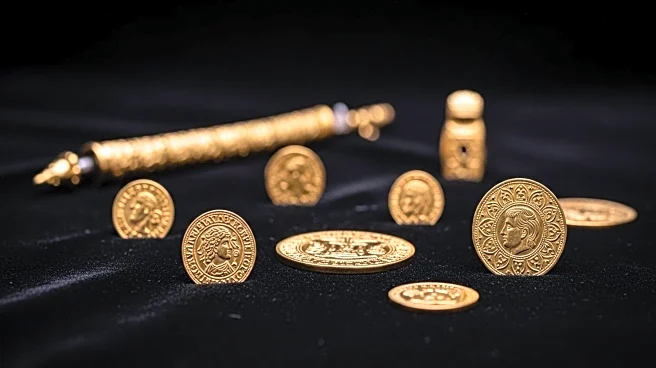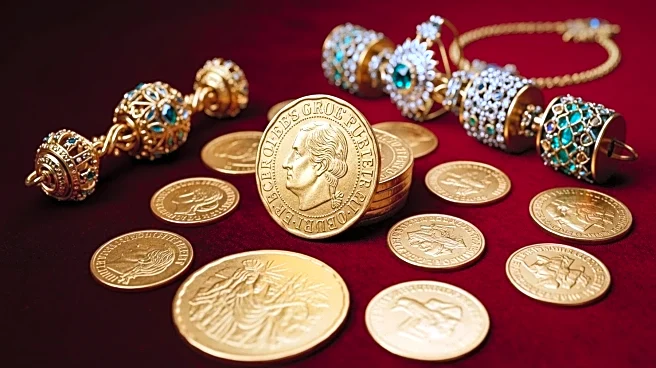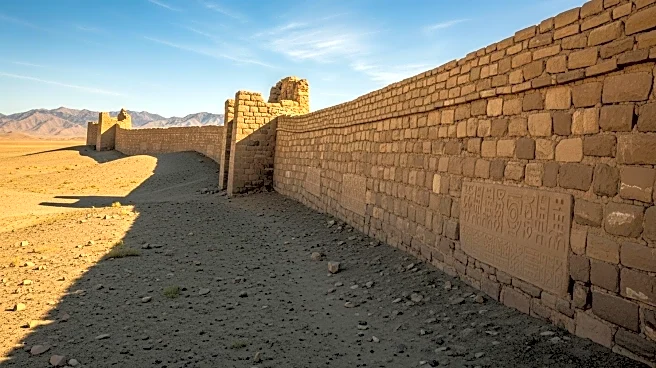What is the story about?
What's Happening?
During routine construction work at the Academic Museum of Art in Bonn, Germany, workers uncovered a 200-year-old cornerstone beneath the museum's rotunda. This discovery included a lead plate dated to 1822, listing notable figures such as Prussian statesman Karl August von Hardenberg and Bonn's mayor Johann Martin Joseph Windeck, who were present at the cornerstone's original setting. The museum, originally the Institute for Anatomy, was completed between 1824 and 1825 and served anatomy students before transitioning to the classical archaeology department in 1885. The cornerstone, now relaid, continues to symbolize the building's historical significance.
Why It's Important?
The discovery of the cornerstone provides a unique glimpse into the historical context of the Academic Museum of Art, highlighting the prominent figures involved in its construction. This find enriches the cultural heritage of the University of Bonn, which has been a significant educational institution since its founding in 1818. The museum's ongoing renovations and the research on the lead plate by the Rhineland Regional Council's office for monument preservation underscore the importance of preserving historical artifacts. Such discoveries can enhance public interest in archaeology and history, potentially influencing educational and cultural policies.
What's Next?
The lead plate is currently being researched by the Rhineland Regional Council's office for monument preservation, which may reveal further insights into the historical context of the museum's construction. The museum's renovations are ongoing, and the cornerstone has been relaid to continue its symbolic function. This discovery may prompt further archaeological investigations in the area, potentially uncovering more historical artifacts. The museum's management and local authorities might consider ways to incorporate this find into educational programs or exhibitions to engage the public with the region's rich history.
Beyond the Headlines
The discovery of the cornerstone highlights the importance of preserving historical sites and artifacts, which can offer valuable insights into cultural and scientific advancements. It also raises questions about the role of museums in maintaining and showcasing historical narratives. The involvement of notable figures in the cornerstone's setting reflects the interconnectedness of politics, science, and culture in the 19th century, offering a broader understanding of the era's societal dynamics.
AI Generated Content
Do you find this article useful?















